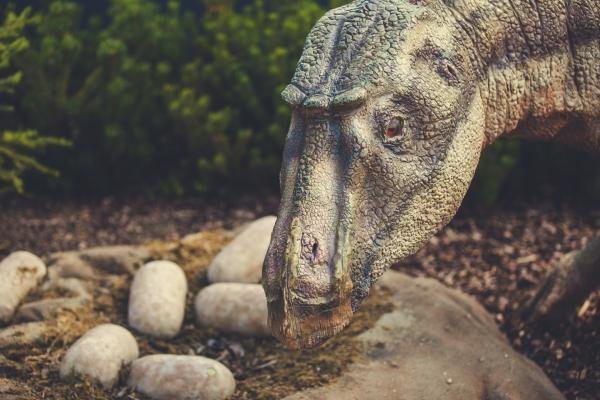Dinosaurs were amazing and large animals that appeared more than 120 million years ago, however, they became extinct approximately 65 million years ago due to numerous environmental disasters. For this reason, the human being has never been able to get to know them and the only information that is available today comes from the study of the fossils found and from numerous investigations.
Since these fossils only preserve the hard parts of the animal, such as bones, it is impossible to fully know what the dinosaurs’ way of life was like. Thus, one of the great unknowns is how dinosaurs reproduced and were born. If you are interested in the reproduction of dinosaurs, don’t hesitate to read this article.

Dinosaurs way of life
Some groups of dinosaurs, such as theropods, were carnivores and fed on smaller dinosaurs or other extant animal species. Other dinosaurs, such as sauropsids, were herbivores and fed on the flora they found on earth. There were also species of omnivorous dinosaurs, which fed on both plant species and other small animals.
They were oviparous animals, which means that they laid eggs, which they incubated and protected normally. However, some species chose to abandon them.
As a method of defense, they used their large claws, their sharp teeth and their robust body with thick and hard layers that prevented the bite of other dinosaurs. In addition, they could feature intimidating structures, such as large tails and horns.
According to some studies, they could reach approximately 30 years of age, being at 19 years sexually mature.
Some specimens lived in packs and cared for all the young together. Others, however, preferred a more solitary life.
Reproduction of dinosaurs
Since the theropods (group of dinosaurs) were the origin of today’s birds, these two animals have some things in common, among them, the mode of reproduction and the care of their babies.
Dinosaurs were oviparous animals and presented internal fertilization, but nowadays it is not known exactly what the copulation between the male and the female was like. This is due to the complex morphology of these animals and the lack of information in the fossil remains, since it has not been possible to observe soft parts such as copulatory organs. However, there are several theories about the reproduction of dinosaurs, including the existence of sewers. These are cavities, present in animals such as reptiles and birds, where they urinate, the animal’s waste is expelled and copulation takes place. At present, research is continuing on how the reproduction of dinosaurs could be, although everything indicates that it may be due to the alignment of these sewers and the existence of a retractable member in the male capable of introducing sperm.
Regarding the place, duration, gestation periods and other factors, it is not known with certainty how they took place. Some experts believe that copulation was carried out in aquatic environments (swamps), since the dinosaurs weighed a lot and this could cause a problem to perform intercourse on land. Other studies also affirm that the incubation period of a baby dinosaur could reach 6 months, although this would depend on the species of dinosaur, being able to develop in less time.
Dinosaur Eggs
Dinosaurs could lay between 20 and 40 eggs, which measured between 30 and 60 centimeters, and laid them in nests that they dug into the ground. Later, they buried them with the help of sand, leaves or any other element capable of protecting their young from other dinosaurs that wanted to steal or eat them. Sometimes these excavations were open, so the dinosaurs invested energy so that the shells of the eggs were colored and could be camouflaged in the environment. It has been possible to verify the existence of numerous dinosaur nests in the same place, which indicates that the adults carried out cooperative measures to control and protect all the eggs in the herd at the same time.
Depending on the structure and composition, three types of eggs could be distinguished:
- Ornithoid eggs: a separation could be seen in the lower part of the shell. In the rest of the egg a spongy and crystalline structure was observed. These eggs were typical of theropods.
- Spherulitic eggs: their shells had a crystalline structure entirely in the shape of a sphere. They were typical of sauropods.
- Prismatic Eggs: The sphere-shaped crystalline structure only appeared in the lower region of the egg, meanwhile, in the upper part they grew in the form of prisms.
Caring for baby dinosaurs
After hatching the eggs, the dinosaurs were normally less than one meter tall, since most were not fully developed and capable of going out into the world. It is for this reason that their mothers were in charge of going out to look for food and bring it to the nests, where they hid their babies. This posed a danger on numerous occasions, since, at that time, other carnivorous dinosaurs took advantage to feed on these helpless young if there was no adult in charge of them.
On many other occasions, babies could starve to death when their mother died and could not feed them. If all went well, the little dinosaurs would quickly grow larger and become independent.
It is also believed in the existence of dinosaur species whose babies hatched from the fully developed egg and could start looking for their own food directly without the help of their parents.
